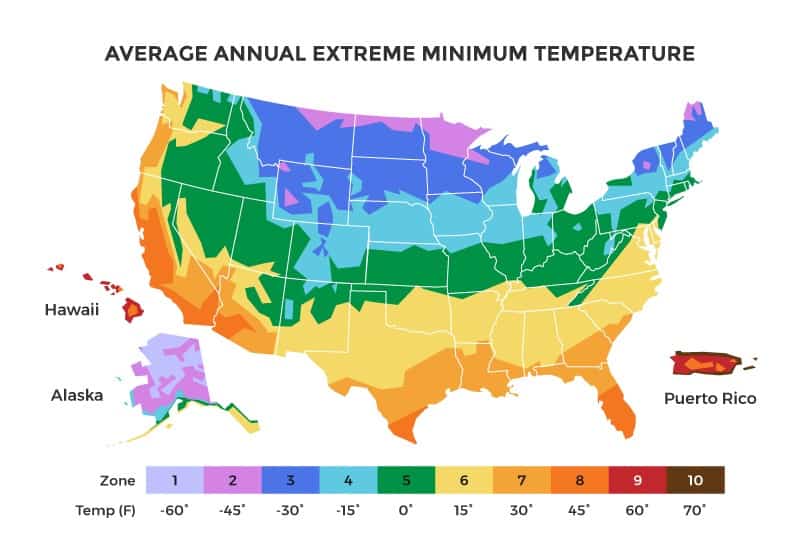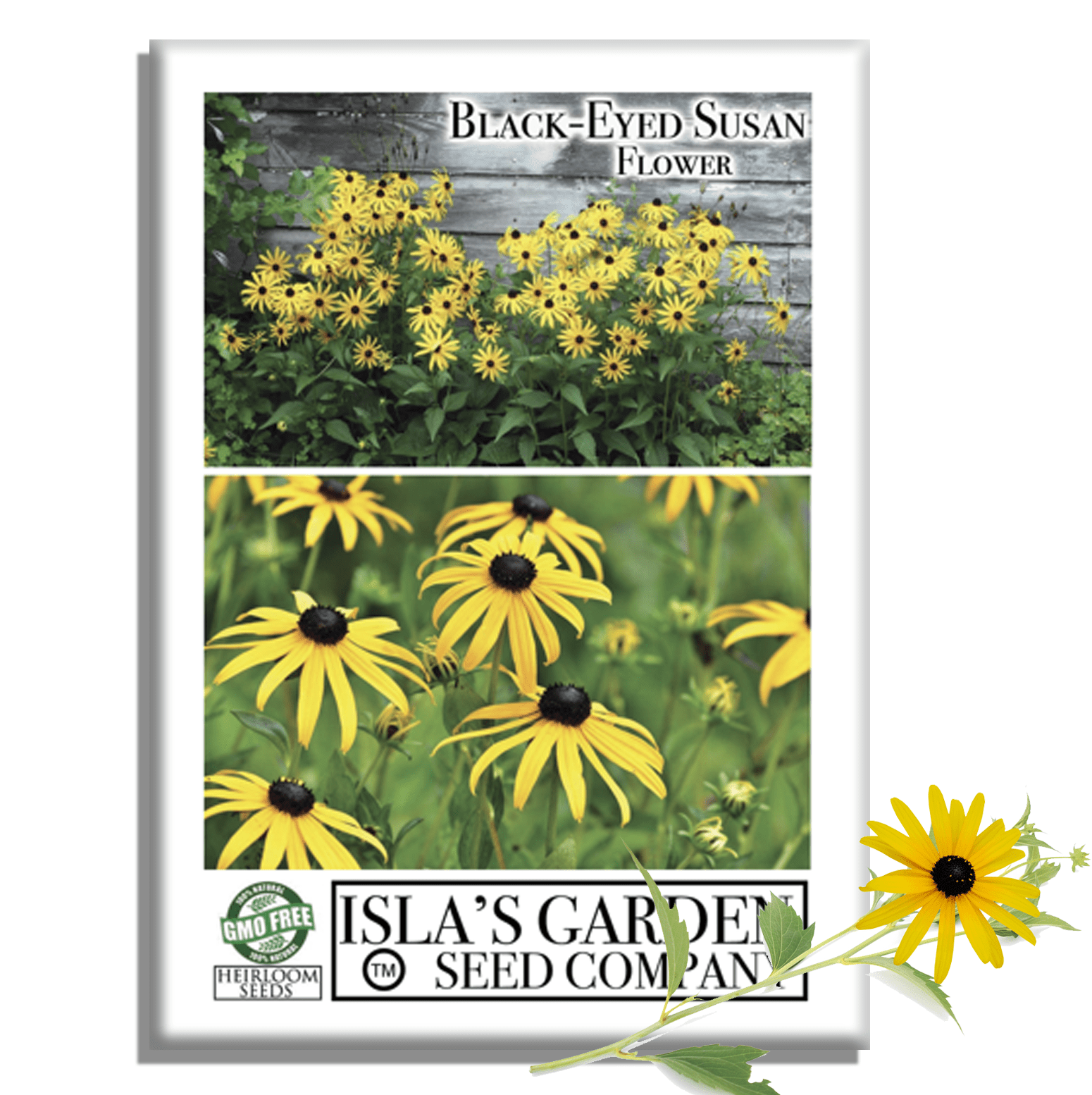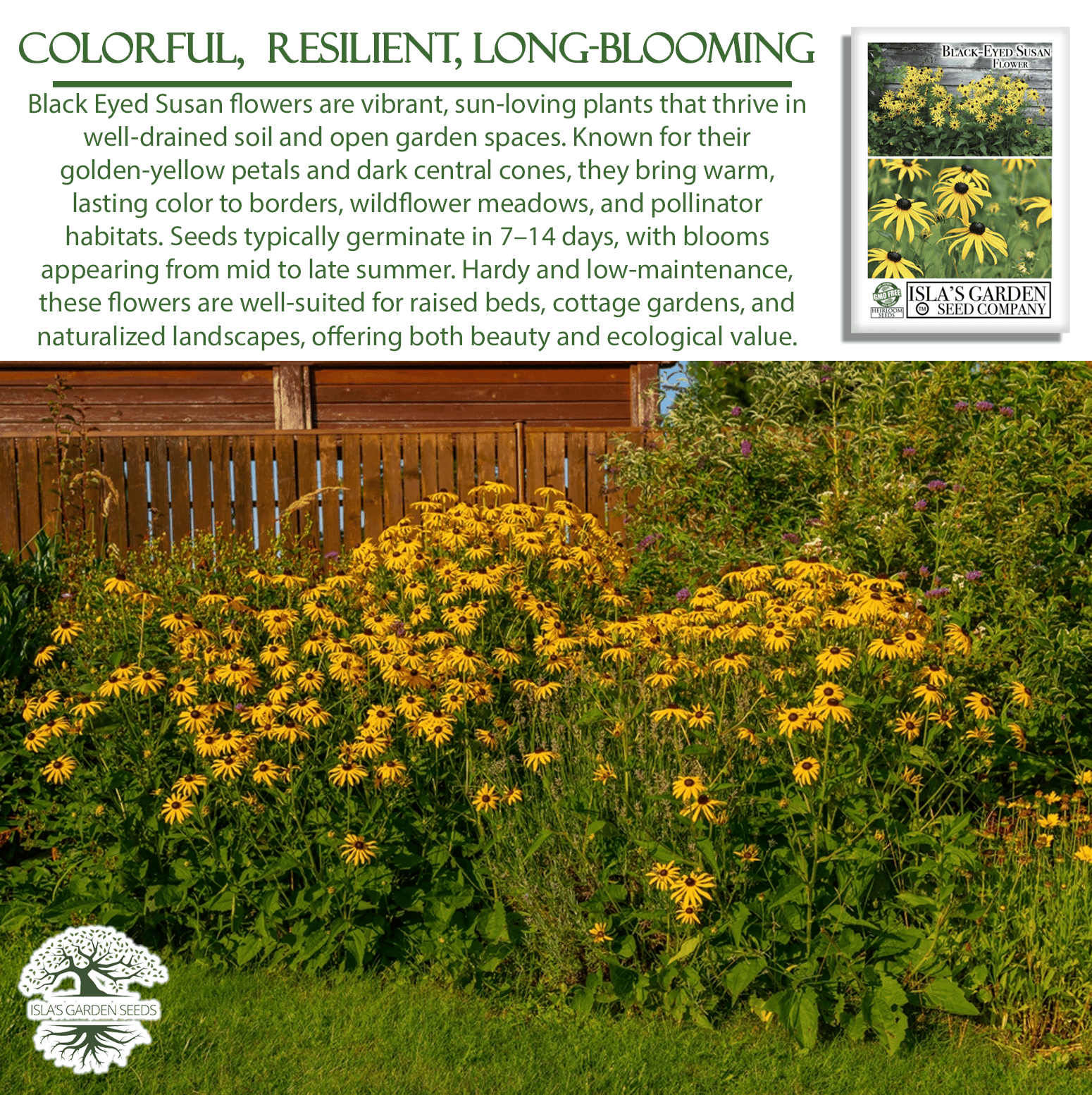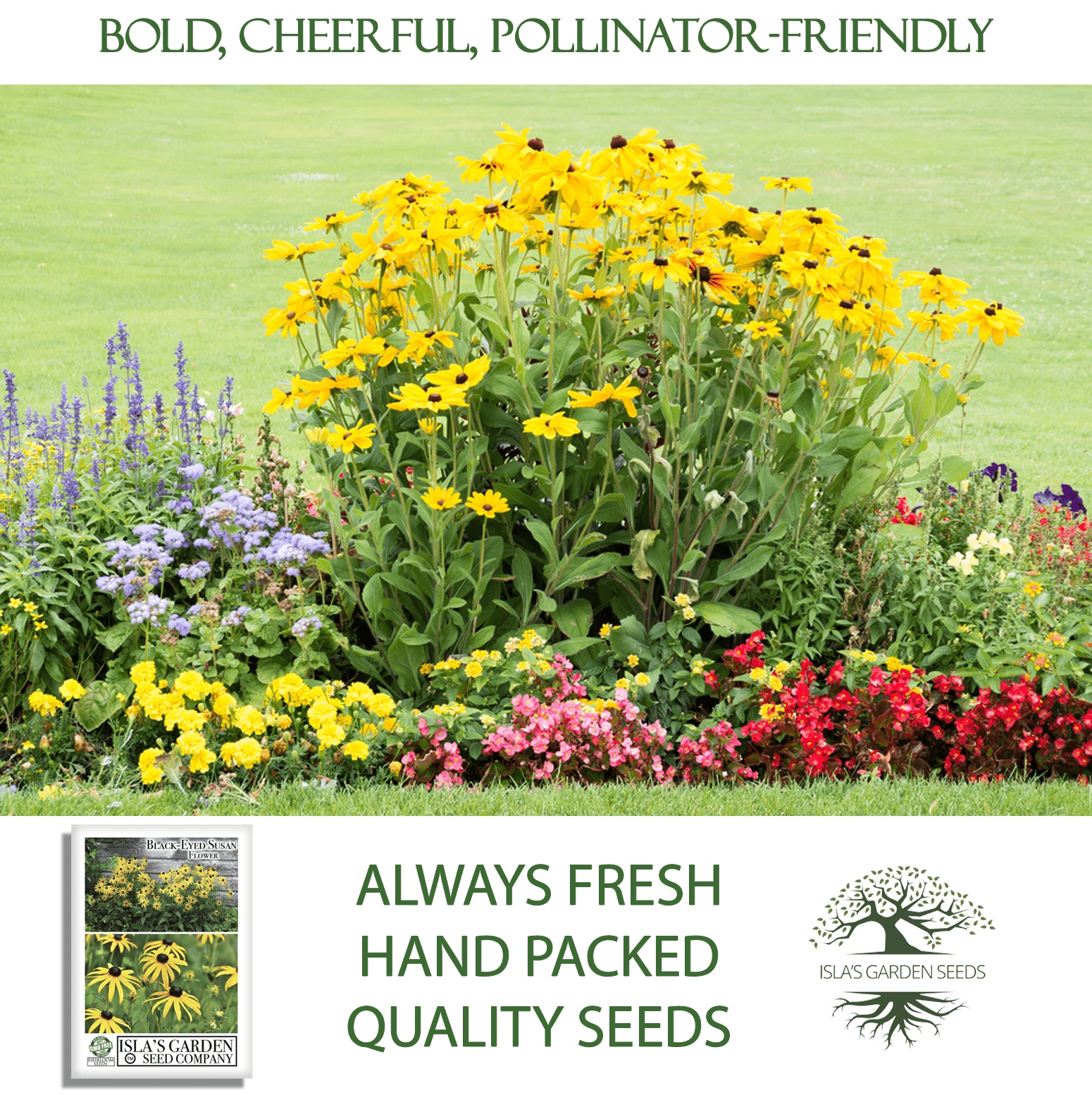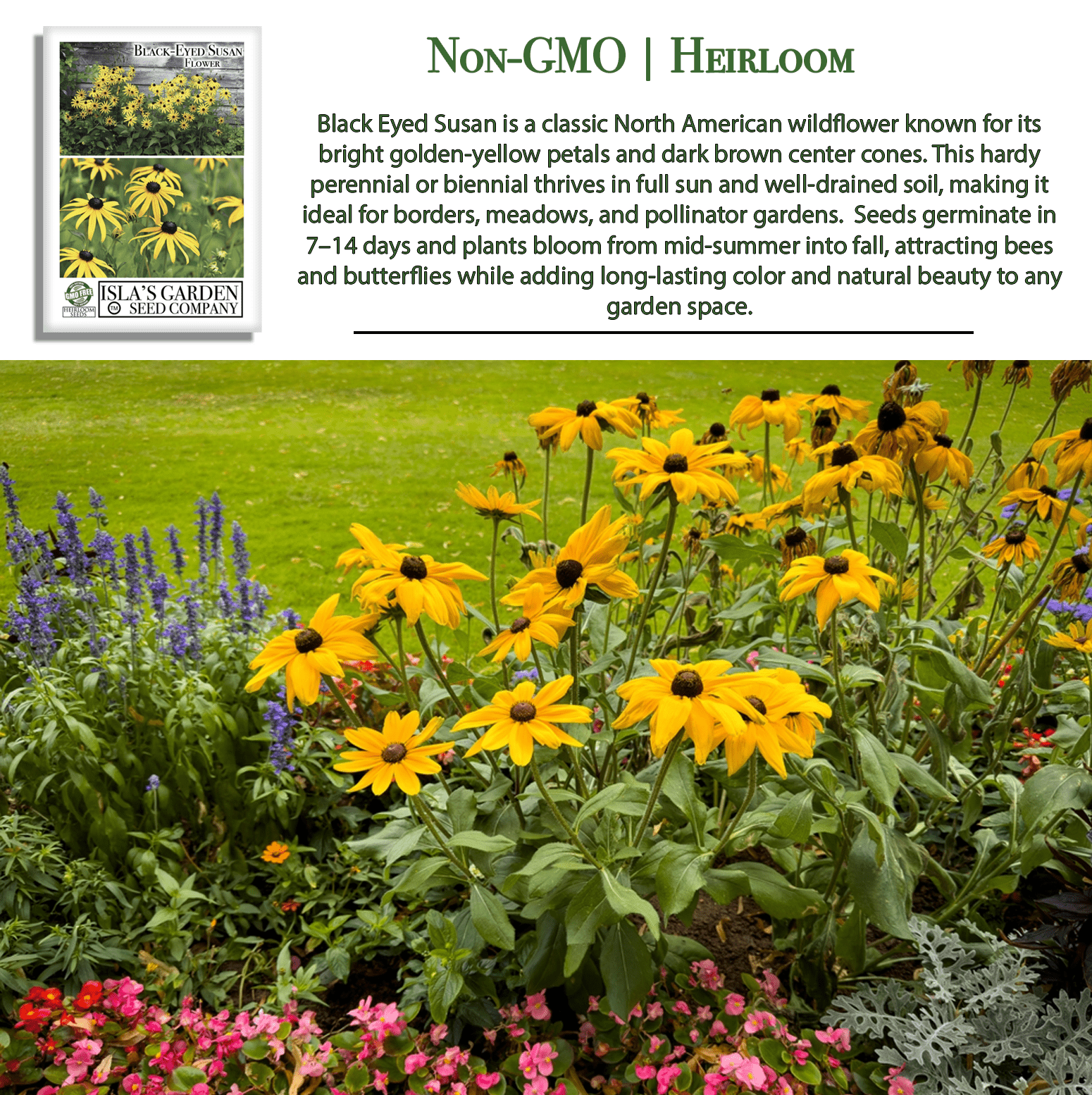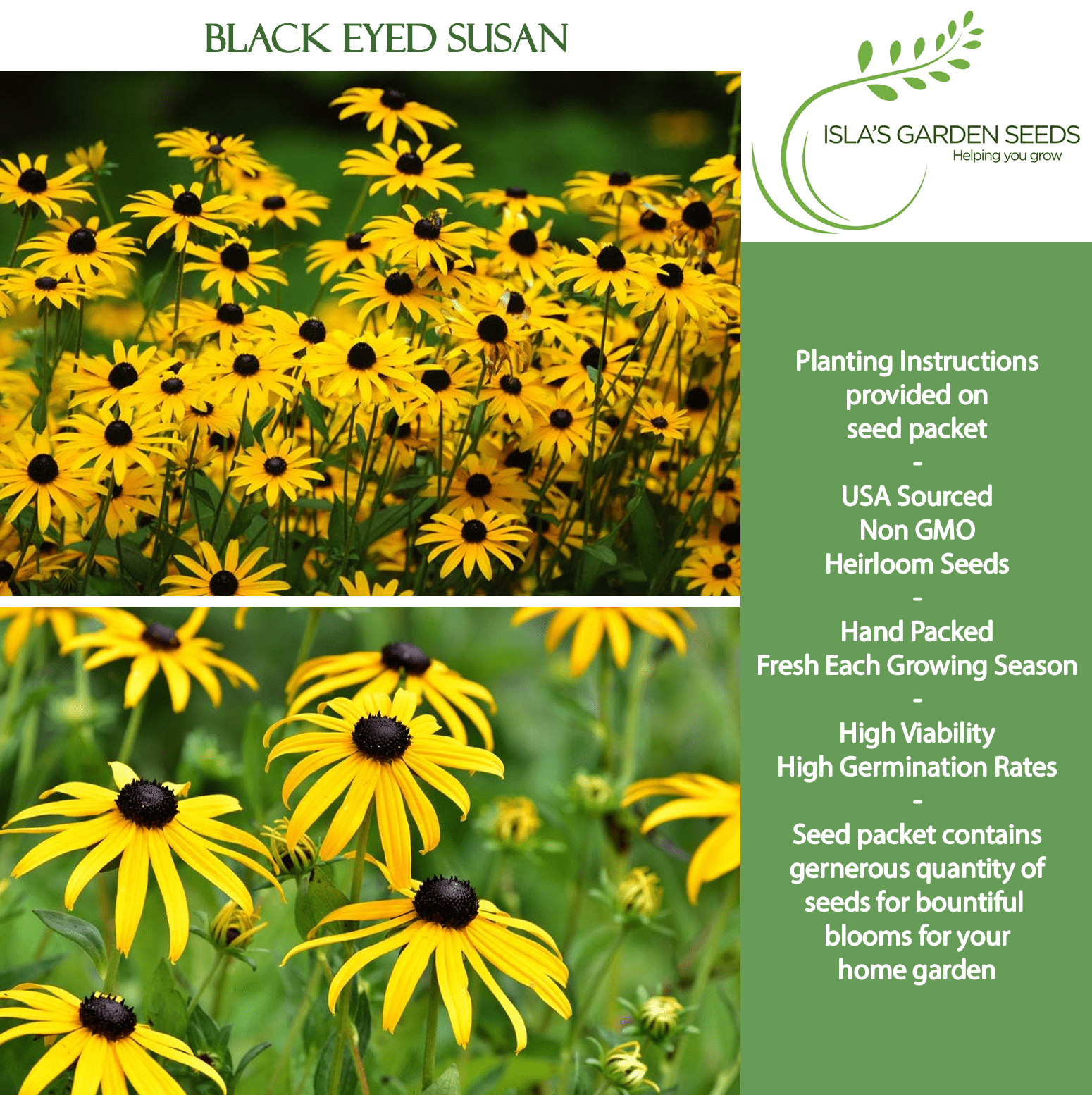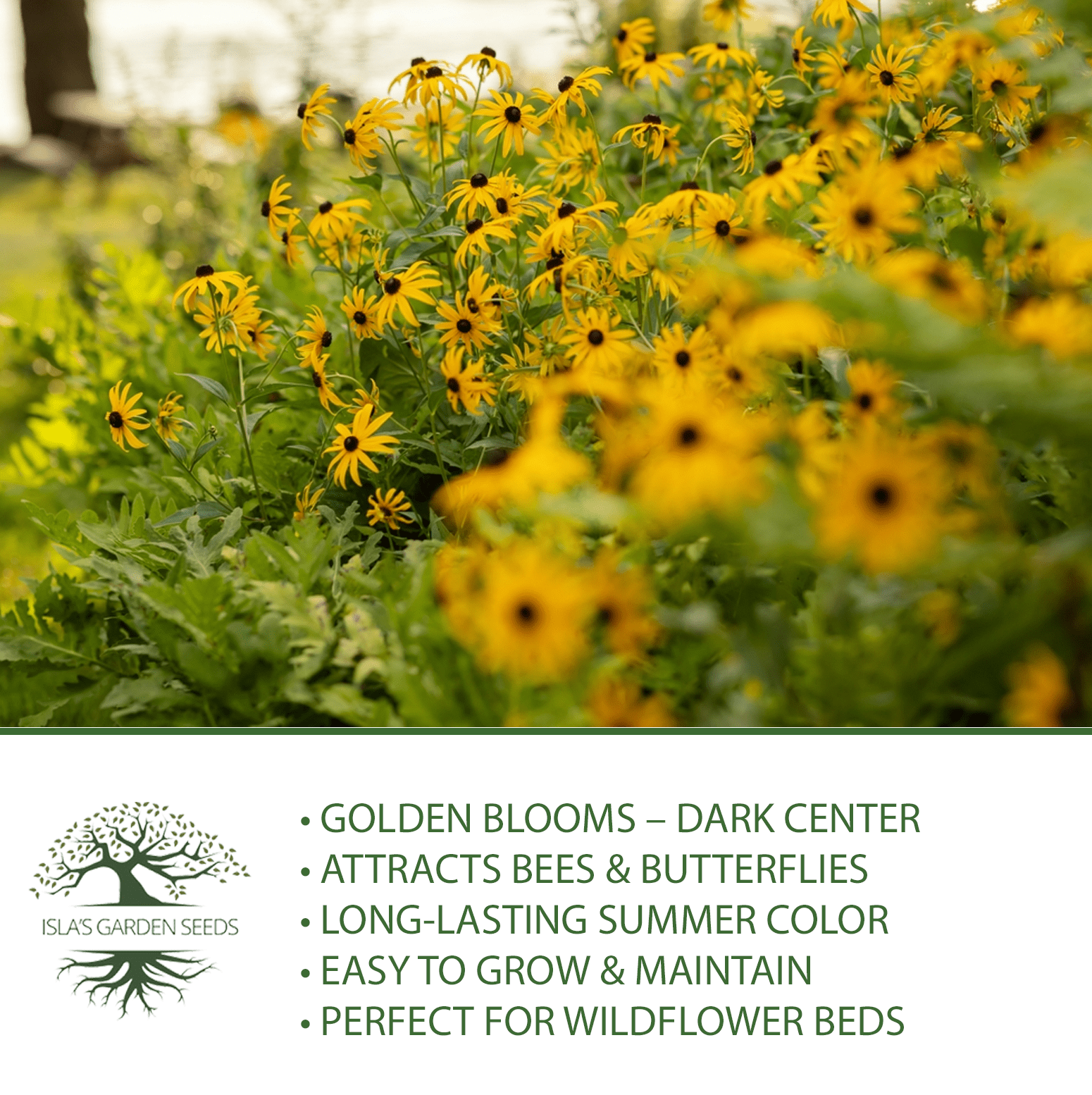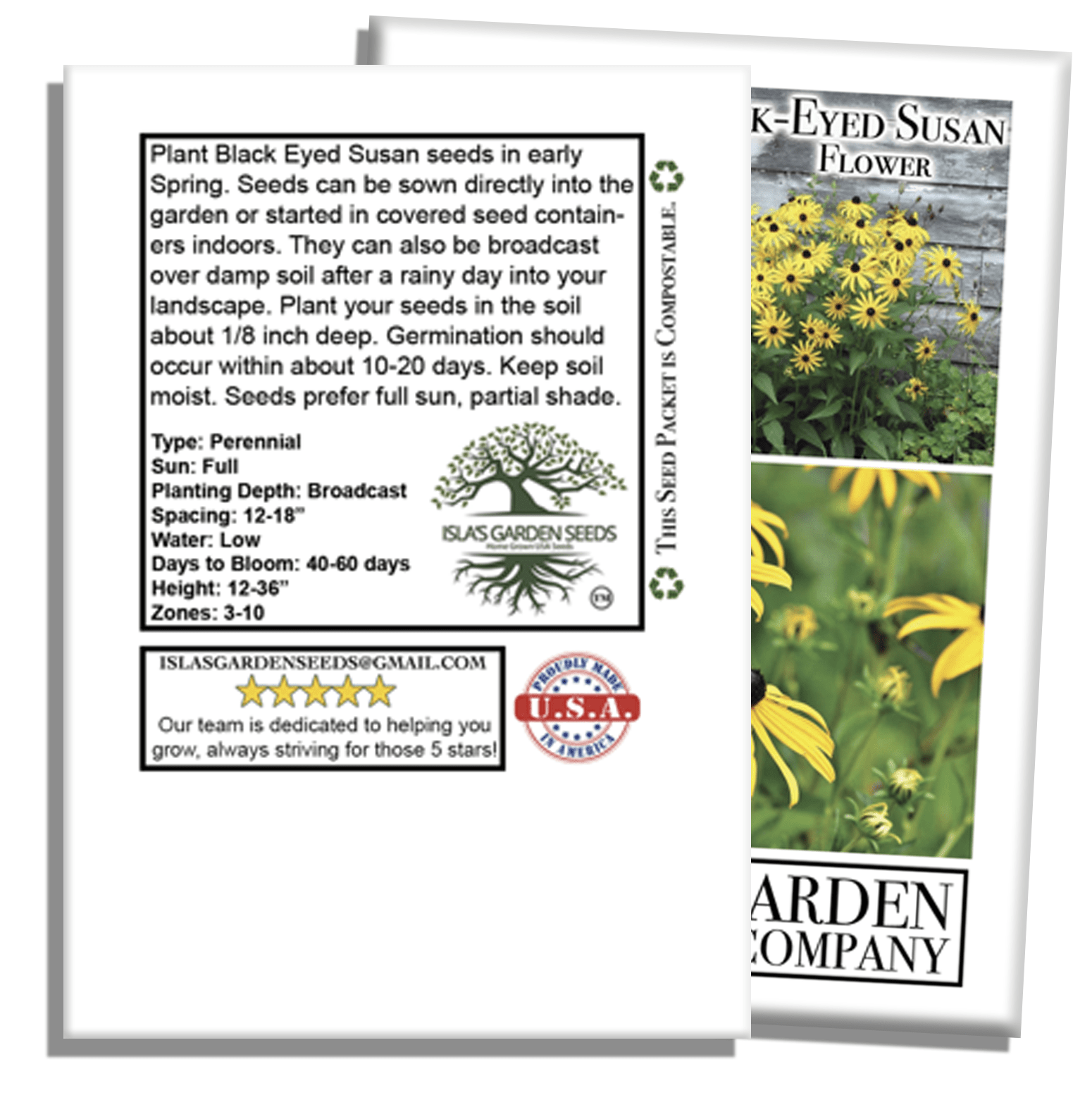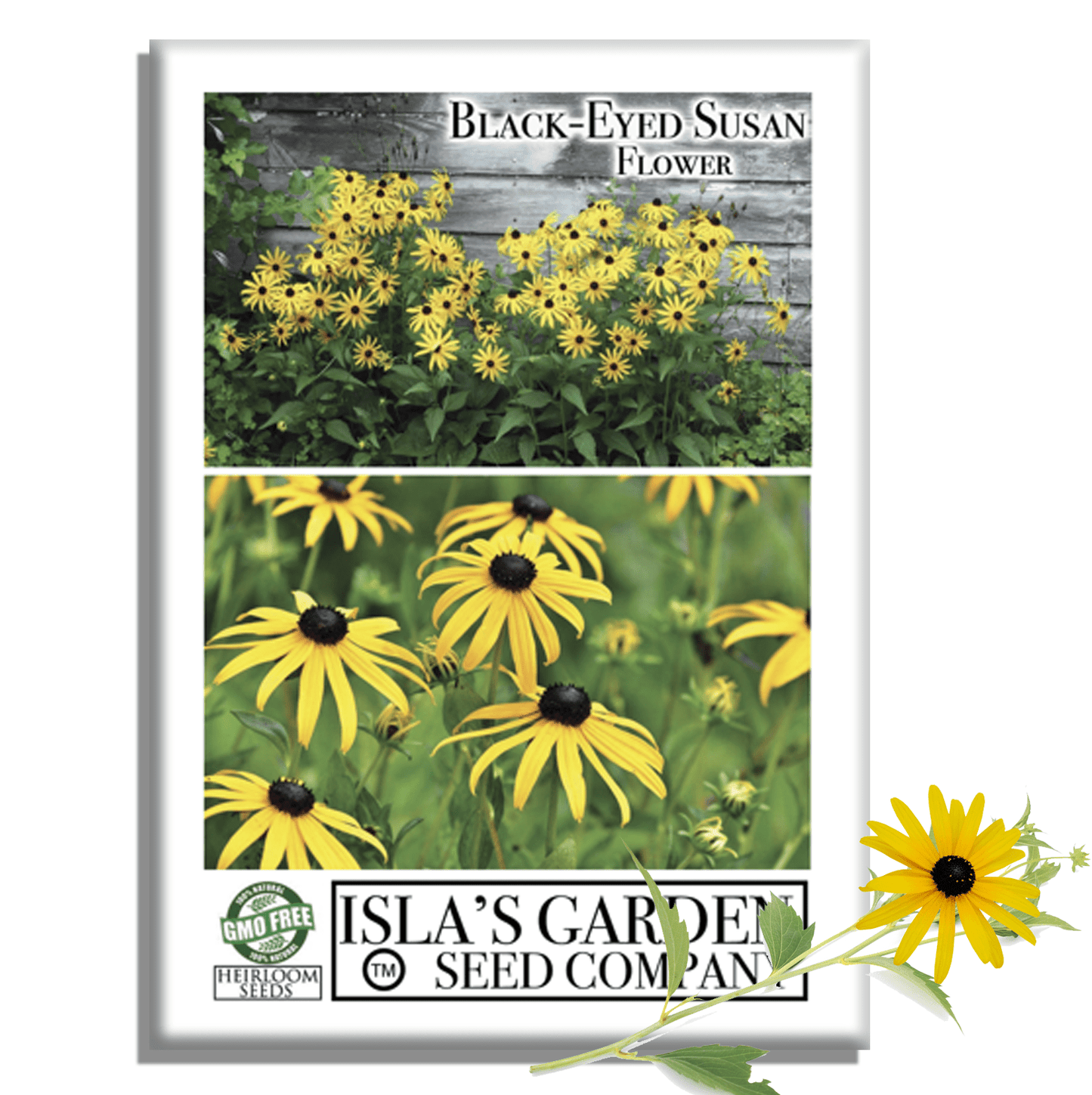

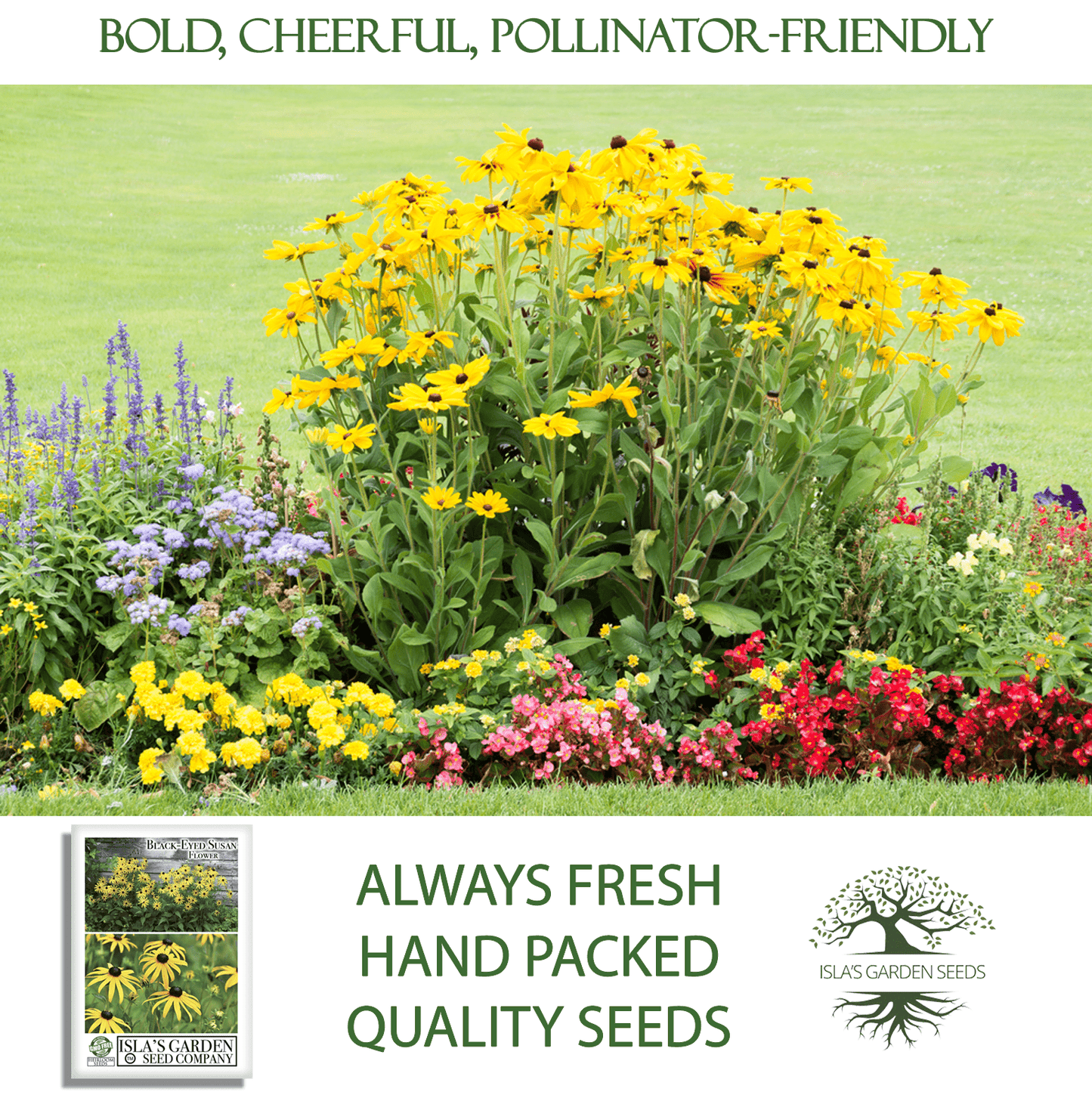
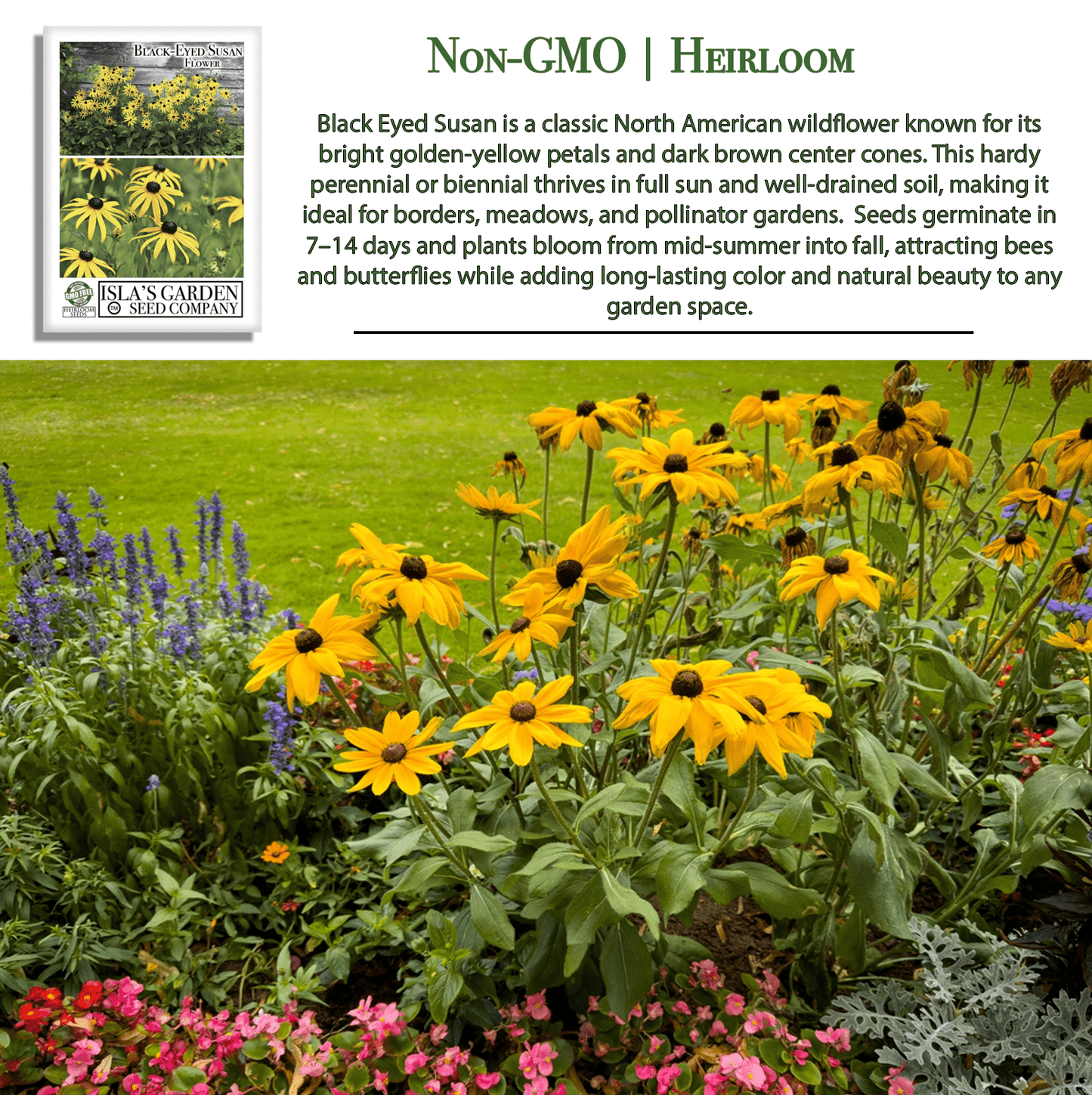
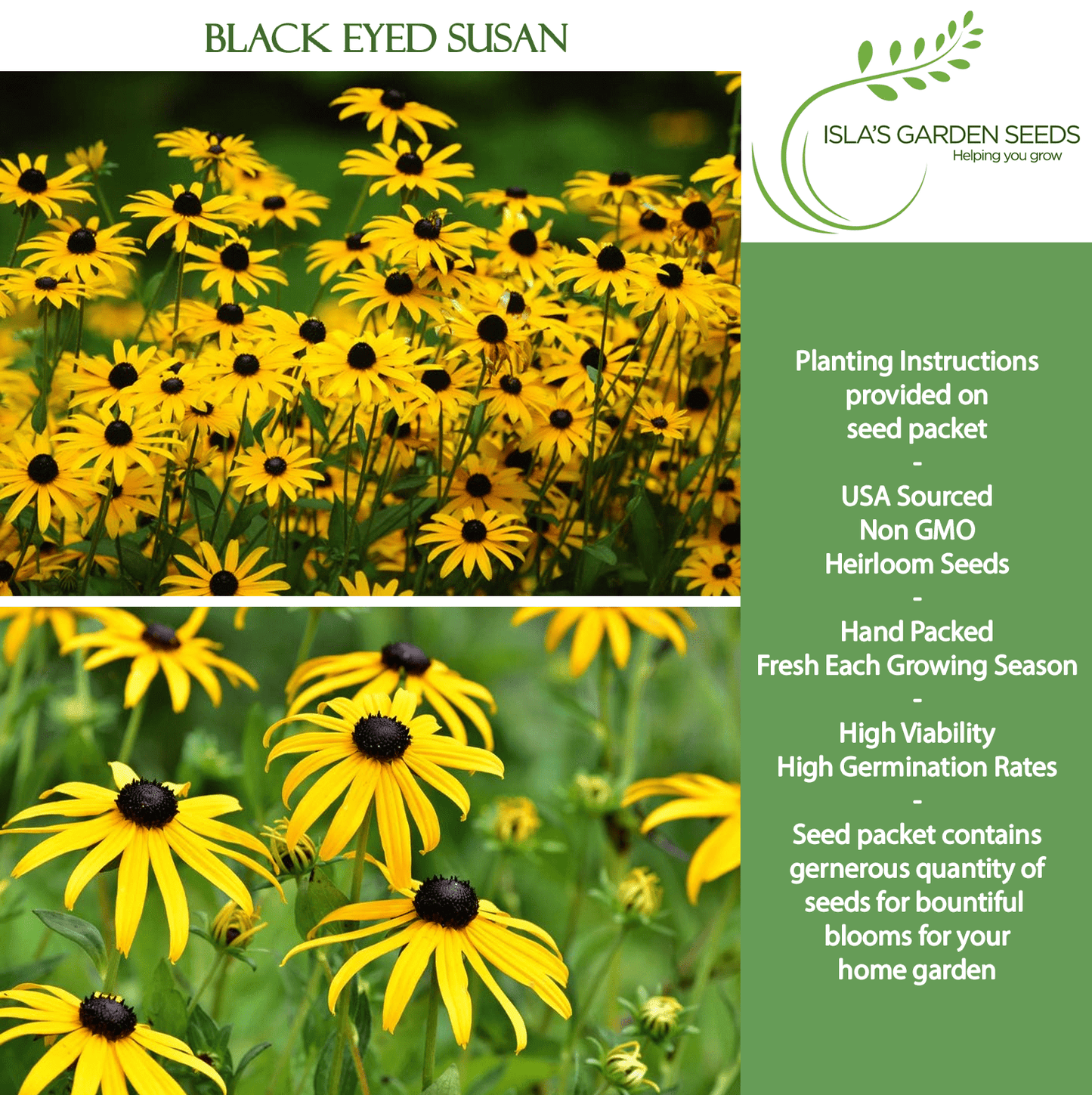
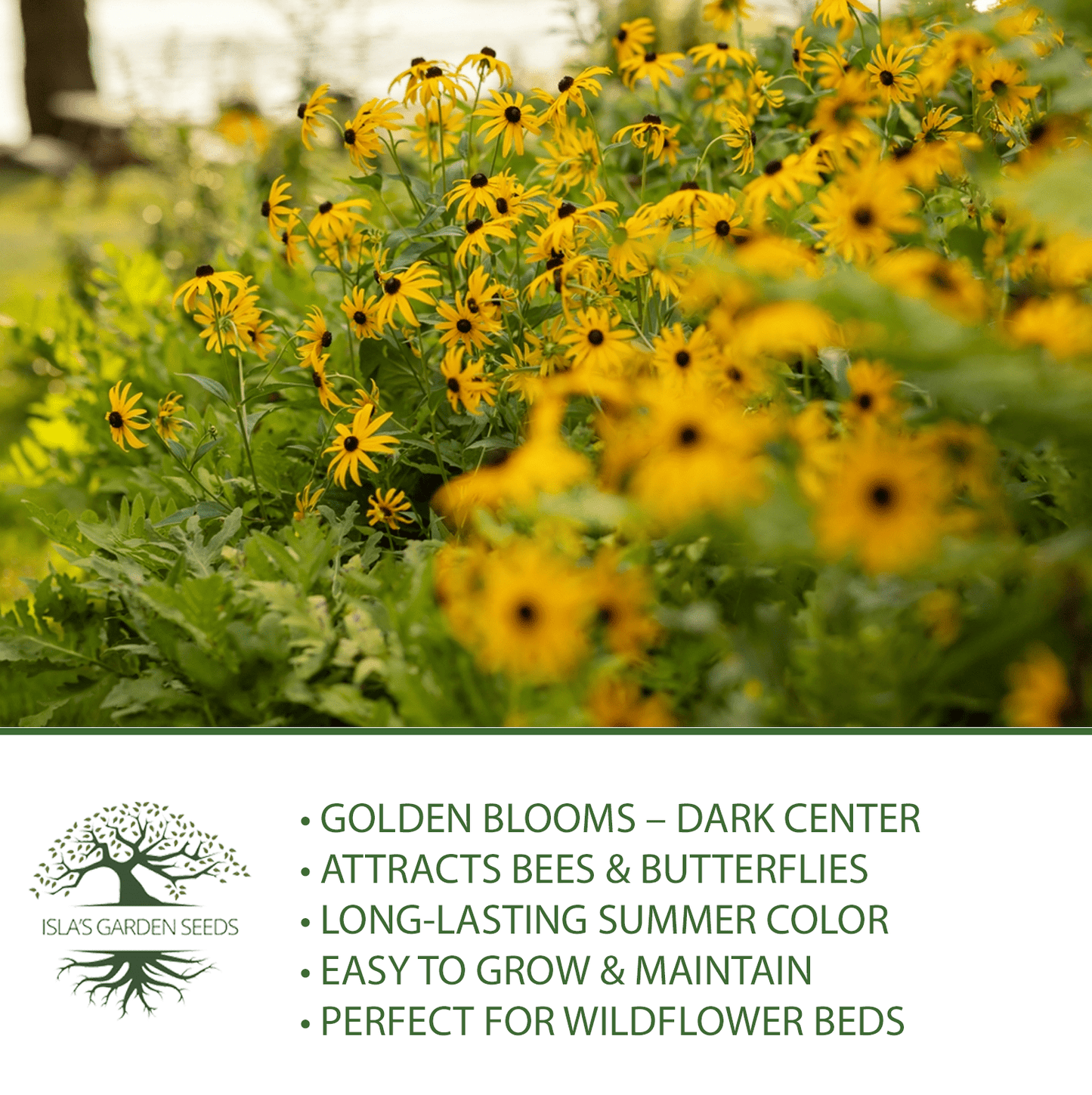
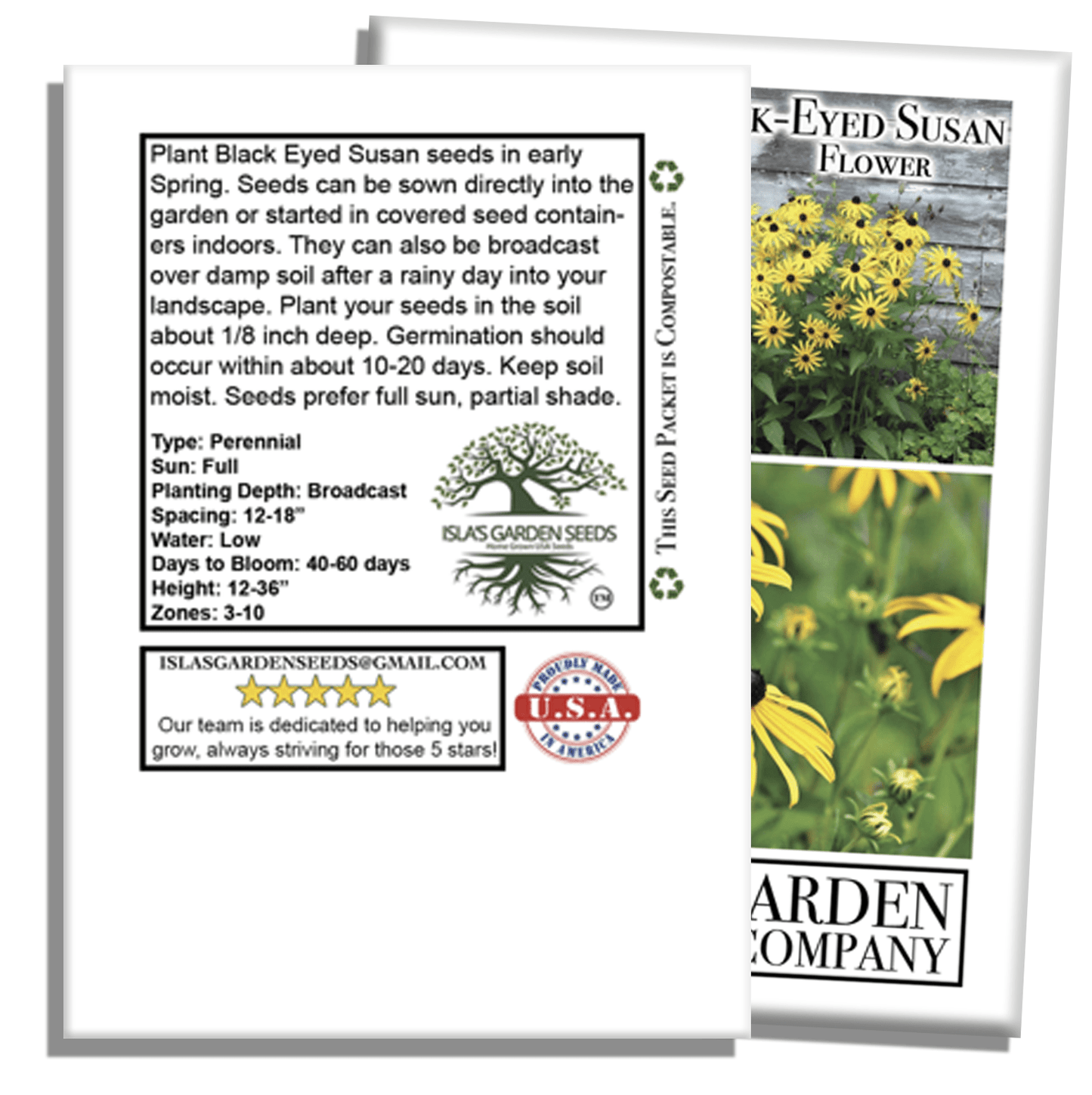
Rudbeckia hirta
Black Eyed Susan flowers bring lasting color and charm to any garden with their iconic golden-yellow petals and bold dark centers. Easy to grow and widely adaptable, these hardy perennials thrive in full sun and well-draining soil, producing a profusion of blooms from summer into fall. Perfect for borders, meadows, and pollinator gardens, Black Eyed Susans attract butterflies and bees while providing vibrant, low-maintenance beauty season after season.
In areas that experience winter or frosts, plant wildflowers in the spring, after all danger of frost has passed. Locations that do not receive frosts can plant wildflowers anytime.
Sow seeds in fields, gardens, lawns, and meadows. Cleared, open spaces will grow more flowers.
Choose a planting day that has rain in the near future, so you don't have to water them. Plant them in full sun in an area that has good drainage. Scatter the seeds broadly around the space. Walk over the seeds to press them into the ground. Do not bury them; they need the sun to germinate.
Keep the soil moist without being soaked until they are 4-6” high. After that, natural rain is generally sufficient.
Type: Perennial
Sun: Full
Planting Depth: Broadcast
Spacing: 12-18”
Water: Low
Days to Maturity/Bloom: 40-60 days
Height: 12-36”
Zones: 3-10
Black Eyed Susan flowers (Rudbeckia hirta) grow well in USDA Zones 3–10, thriving in sunny locations with well-draining soil and blooming reliably from summer into fall.
Type: Perennial
Sun: Full
Planting Depth: Broadcast
Spacing: 12-18”
Water: Low
Days to Maturity/Bloom: 40-60 days
Height: 12-36”
Zones: 3-10
